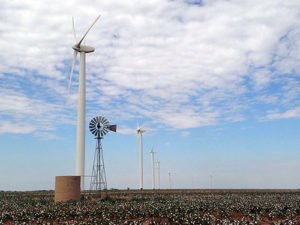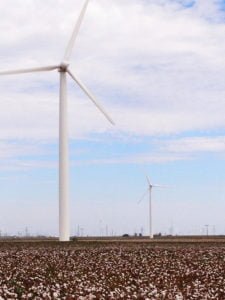Project Description
Location: Mitchell, Nolan, and Scurry Counties, Texas
Installed Capacity: 781.5 MW
Construction Cost: $500,000,000+
Year Commissioned: 2008, 2009
The Roscoe Wind Project is located near the City of Roscoe within Mitchell, Nolan, and Scurry Counties, Texas. The project is divided into four phases comprised of the following: Roscoe Wind Project – Phase I, Champion Wind Project, Inadale Wind Project, and Pyron Wind Project. The total nameplate capacity of all phases is 781.5 MW derived from 406 Mitsubishi 1.0 MW wind turbine generators (WTGs), 55 Siemens 2.3 MW WTGs, and 166 GE 1.5 MW WTGs constructed and installed throughout the entire project. The Roscoe Wind Project is considered one of the largest wind projects in the United States.
RRC provided geotechnical engineering, structural engineering, and construction materials testing for the project. The design team worked and collaborated seamlessly to ensure challenging deadlines and milestones were achieved.
Geotechnically, the subsurface soils and bedrock conditions were variable across the site. Expansive soils and soft clay layers within some portions of the site required particular attention during the design and construction phases. Due to the large number of turbines and geographic extents of this project, multiple field crews were utilized to shorten the field exploration phase schedule. Additionally, RRC performed seismic refraction surveys to aid in estimating static groundwater levels for some portions of the site. Groundwater is an important factor to consider for turbine foundation design.
Structural engineering services included design and sizing of concrete, reinforcing, embedment rings, and anchor bolts for the wind turbine generator foundations to adequately resist the loadings provided by the turbine supplier. Due to the scale of the project, it was important for RRC to create the most economical design possible in order to provide cost savings over the many turbine sites of the project.
During construction, RRC provided continuous engineering support to effectively provide measures to address issues related to foundation dewatering and unsuitable foundation subgrade. RRC’s remedial measures were efficiently engineered, cost effective, and helped with maintaining the construction schedule.


